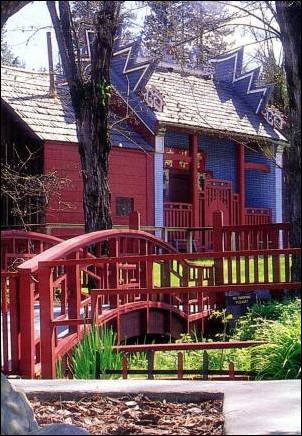The Built Environment
The built environment includes an array of historic buildings, structures and objects, from missions, forts and rock walls to entire town sites and settlements. These resources serve as physical connections to our past, reflecting the history and impact of California’s diverse cultures.
The historic era has left a wealth of structures, features and sites of immeasurable importance to the citizens of California. Mission period adobes, Russian frontier forts, gold-rush era sites, ghost towns, early shipwrecks, unique structures, industrial sites and "gold diggins" are but a few of the many significant historical resources to be found in California's parks.
Like archaeological sites, artifacts and historic documents, historic buildings have great potential to provide important insight into historic people and lifeways, as well as architectural history. Historic buildings are not static entities, but have often grown and changed extensively since their initial construction. As such, they must be viewed not simply as an example of a particular architectural style, but as the end products of complex evolutionary processes.
Buildings frequently embody valuable evidence about their earlier configuration, inhabitants, and uses. Discovering and recording that evidence is similar in many ways to the procedures used by archaeologists to understand more traditional buried sites. In the State Park System, detailed studies of historic buildings are frequently undertaken by architects, archaeologists and historians to provide the information needed to plan restoration and interpretation, and to document historic features before they are modified or replaced during modern renovation efforts.
The variety of historic buildings and structures found within our State Parks includes the Weaverville Joss House, a Taoist temple; the home of Pío Pico, the last governor of Mexican California; the Russian outpost of Fort Ross; and the African American farming community of Allensworth.
Other historic buildings and structures exhibit architectural styles the are unique or representative of important types or designs, including the vernacular "Park Rustic" style, with its rough-hewn log and rock-faced features, associated with the Civilian Conservation Corps of the 1930s.

Weaverville Joss House State Historic Park
